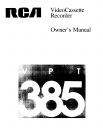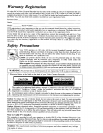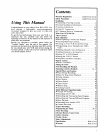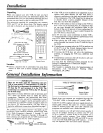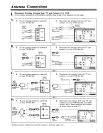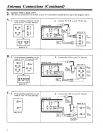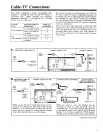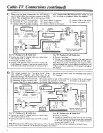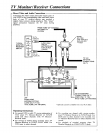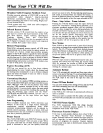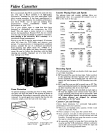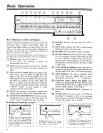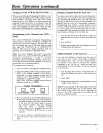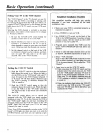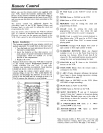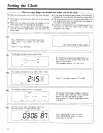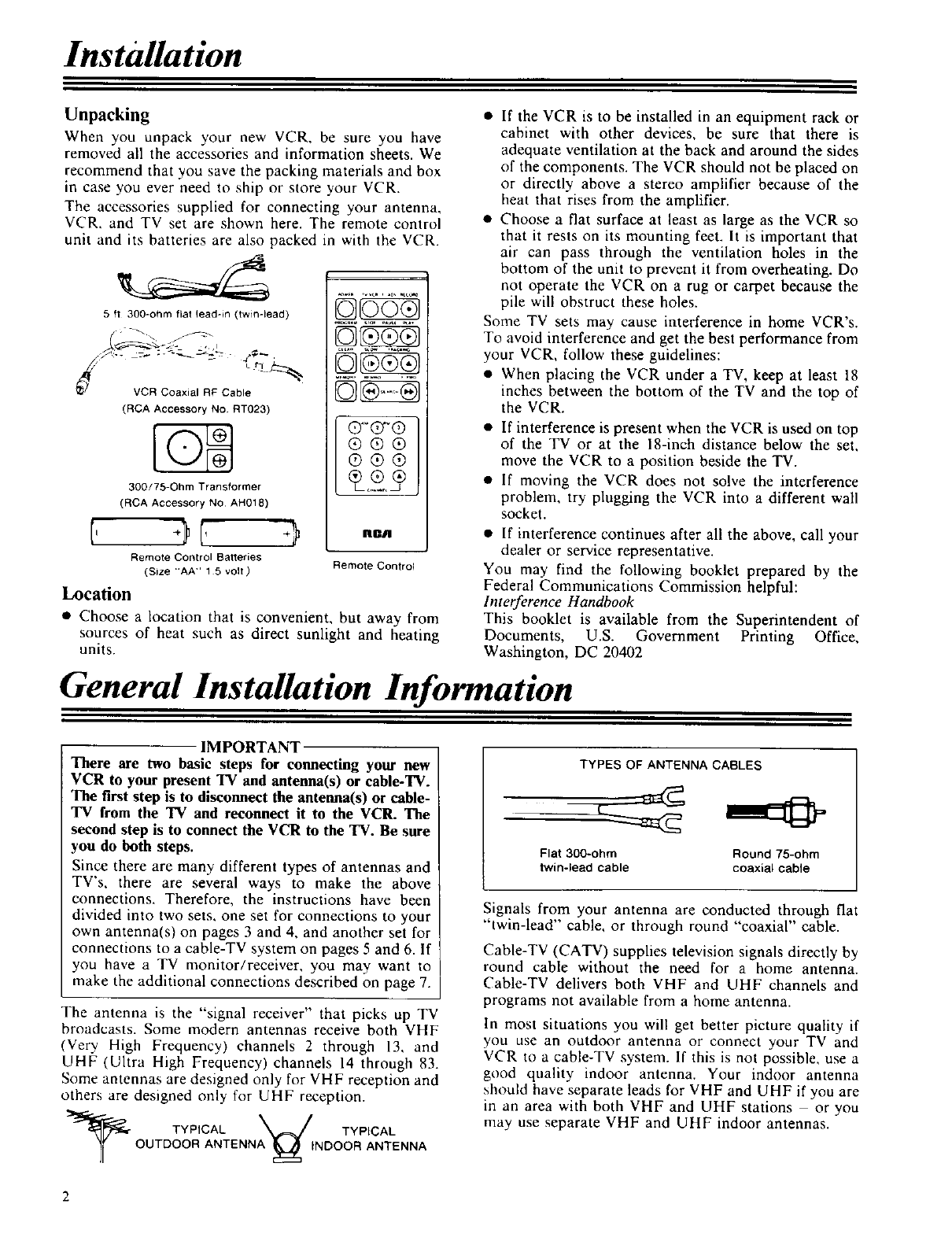
Installation
Unpacking
When you unpack your new VCR, be sure you have
removed all the accessories and information sheets. We
recommend that you save the packing materials and box
in case you ever need to ship or store your VCR.
The accessories supplied for connecting your antenna,
VCR, and TV set are shown here. The remote control
unit and its batteries are also packed in with the VCR.
5 ft 300-ohm fiat lead-in (fwindead)
_ VCR Coaxial RF Cable
(RCA Accessory NO RT023)
300/7S-Ohm Transformer
(RCA Accessory No AH018)
Remote Control Batteries
(Size "AA" 1 5 volt,)
®®®
®®®
®®®
rlr_rl
Remote Control
Location
• Choose a location that is convenient, but away from
sources of heat such as direct sunlight and heating
units.
• If the VCR is to be installed in an equipment rack or
cabinet with other devices, be sure that there is
adequate ventilation at the back and around the sides
of the components. The VCR should not be placed on
or directly above a stereo amplifier because of the
heat that rises from the amplifier.
• Choose a flat surface at least as large as the VCR so
that it rests on its mounting feet. It is important that
air can pass through the ventilation holes in the
bottom of the unit to prevent it from overheating. Do
not operate the VCR on a rug or carpet because the
pile will obstruct these holes.
Some TV sets may cause interference in home VCR's.
To avoid interference and get the best performance from
your VCR, follow these guidelines:
• When placing the VCR under a TV, keep at least 18
inches between the bottom of the TV and the top of
the VCR.
• If interference is present when the VCR is used on top
of the TV or at the 18-inch distance below the set,
move the VCR to a position beside the TV.
• If moving the VCR does not solve the interference
problem, try plugging the VCR into a different wall
socket.
• If interference continues after all the above, call your
dealer or service representative.
You may find the following booklet prepared by the
Federal Communications Commission helpful:
Interference Handbook
This booklet is available from the Superintendent of
Documents, U.S. Government Printing Office,
Washington, DC 20402
General Installation Information
IMPORTANT
There are two basic steps for connecting your new
VCR to your present TV and antenna(s) or cable-TV.
The first step is to disconnect the antenna(s) or cable-
TV from the TV and reconnect it to the VCR. The
second step is to connect the VCR to the 'IV. Be sure
you do both steps.
Since there are many different types of antennas and
TV's, there are several ways to make the above
connections. Therefore, the instructions have been
divided into two sets, one set for connections to your
own antenna(s) on pages 3 and 4, and another set for
connections to a cable-TV system on pages 5 and 6. If
you have a TV monitor/receiver, you may want to
make the additional connections described on page 7.
The antenna is the "signal receiver" that picks up TV
broadcasts. Some modern antennas receive both VHF
(Very High Frequency) channels 2 through 13, and
UHF (Ultra High Frequency) channels 14 through 83.
Some antennas are designed only for VHF reception and
others are designed only for UHF reception.
TYPICAL _ TYPLCAL
OUTDOOR ANTENNA U INDOOB ANTENNA
TYPES OF ANTENNA CABLES
Flat 300-ohm Bound 75-ohm
twin-lead cable coaxial cable
Signals from your antenna are conducted through flat
"twin-lead" cable, or through round "coaxial" cable.
Cable-TV (CATV) supplies television signals directly by
round cable without the need for a home antenna.
Cable-TV delivers both VHF and UHF channels and
programs not available from a home antenna.
In most situations you will get better picture quality if
you use an outdoor antenna or connect your TV and
VCR to a cable-TV system. If this is not possible, use a
good quality indoor antenna. Your indoor antenna
should have separate leads for VHF and UHF if you are
in an area with both VHF and UHF stations or you
may use separate VHF and UHF indoor antennas.
2



